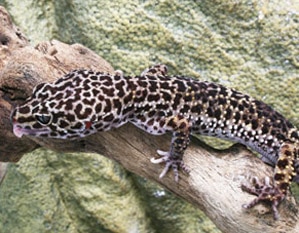Introduction
 Although many lizards are quite vocal, perhaps none is so capable and well known as the Tokay gecko. In fact, the species draws its common name from the loud cries of “Tokay! Tokay!, given (most often in the wee hours of the morning) by the extremely territorial males. Ranging throughout much of south and Southeast Asia, and introduced to Hawaii, Florida and Martinique, the Tokay does not mind human company. It is often more common in homes and other buildings than in more natural settings, even within such bustling cities as Hong Kong and Miami.
Although many lizards are quite vocal, perhaps none is so capable and well known as the Tokay gecko. In fact, the species draws its common name from the loud cries of “Tokay! Tokay!, given (most often in the wee hours of the morning) by the extremely territorial males. Ranging throughout much of south and Southeast Asia, and introduced to Hawaii, Florida and Martinique, the Tokay does not mind human company. It is often more common in homes and other buildings than in more natural settings, even within such bustling cities as Hong Kong and Miami.
Rentable Geckos?
Tokay geckos are aggressive, 12 inch long predators, and do not hesitate to tackle small snakes, treefrogs, other lizards, nestling birds and mammals. Roaches are, however, particularly favored – a dietary preference that often endears them to their human hosts, despite their noisy ways. Some years ago a pet store in New York City began renting them to customers for just that reason. However, the geckos’ propensity to proclaim their territory via “song”, most often at 4 AM, and their willingness to bite (and unwillingness to release their hold!) doomed the scheme to failure.
Early Morning Singers
I once released a group of Tokay geckoes into a large zoo exhibit as a roach control measure (well, to be honest, mainly because I liked to watch them go about their business at night – few lizards can keep up with roach reproduction!). In those days I was often at the zoo until all hours of the night, dealing with emergencies and satisfying my curiosity about the nocturnal goings on there. As has been reported by sleepless gecko hosts worldwide, the males did indeed call most frequently (and vigorously) between the hours of 2 and 4 AM.
You can read more about the natural history of Tokay geckos and related species at:
http://www.tigr.org/reptiles/search.php?submit=Search&genus=Gekko
 That Reptile Blog – Reptile, Amphibian and Exotic Pet Care and Information
That Reptile Blog – Reptile, Amphibian and Exotic Pet Care and Information

